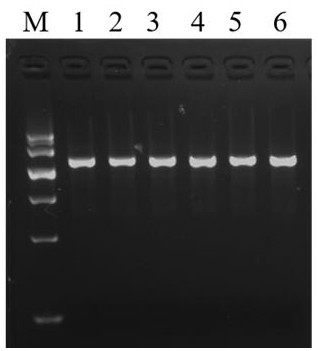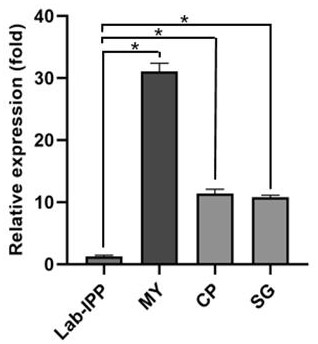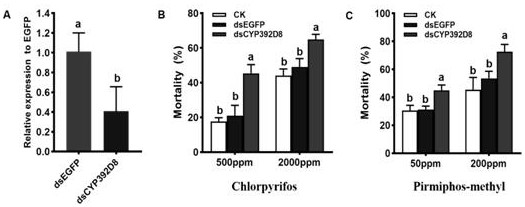A Cytochrome p450 and Its Application in Degrading Pesticide Residues
A cytochrome and population technology, applied in the field of biotechnology and environmental protection, can solve the problems of dead, white leaves, yellow and dry leaves, etc.
- Summary
- Abstract
- Description
- Claims
- Application Information
AI Technical Summary
Problems solved by technology
Method used
Image
Examples
Embodiment Construction
[0018] The present invention is further described below in conjunction with specific embodiments, but does not constitute a limitation of the present invention.
[0019] Materials and Methods
[0020] Test insects
[0021] Two-spotted spider mite indoor sensitive population (Lab-IPP) was provided by the Natural Enemy Insect Research Group of the Institute of Plant Protection, Chinese Academy of Agricultural Sciences. Phaseolus vulgaris Linn) has been raised on leaves until now, and has never been exposed to any chemicals during this period. The rearing conditions were: temperature 26±1°C, humidity 60±5% and photoperiod of L:D=16h:8h. The leaves used for raising the test mites were "Bifeng" kidney bean leaves.
[0022] The three test field populations were collected from eggplant and strawberry hosts in Changping (CP), Beijing, Miyun (MY), and Shouguang, Shandong (SG), respectively. The two-spotted spider mite population collected from the field was reared on clean and in...
PUM
| Property | Measurement | Unit |
|---|---|---|
| diameter | aaaaa | aaaaa |
| molecular weight | aaaaa | aaaaa |
Abstract
Description
Claims
Application Information
 Login to View More
Login to View More - R&D
- Intellectual Property
- Life Sciences
- Materials
- Tech Scout
- Unparalleled Data Quality
- Higher Quality Content
- 60% Fewer Hallucinations
Browse by: Latest US Patents, China's latest patents, Technical Efficacy Thesaurus, Application Domain, Technology Topic, Popular Technical Reports.
© 2025 PatSnap. All rights reserved.Legal|Privacy policy|Modern Slavery Act Transparency Statement|Sitemap|About US| Contact US: help@patsnap.com



